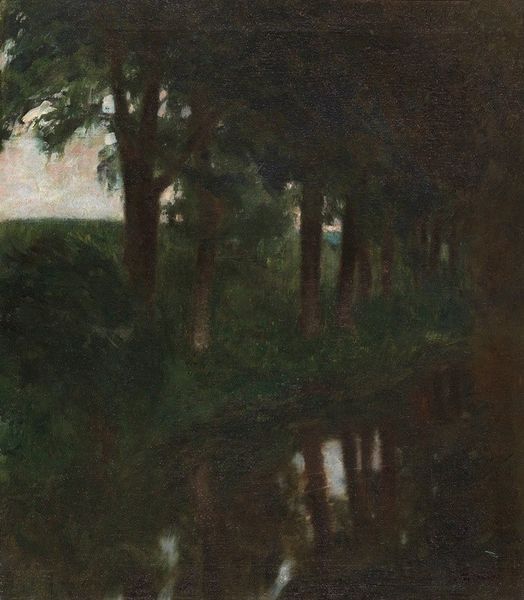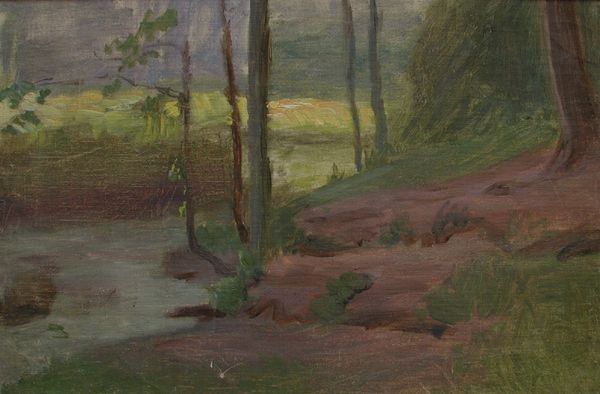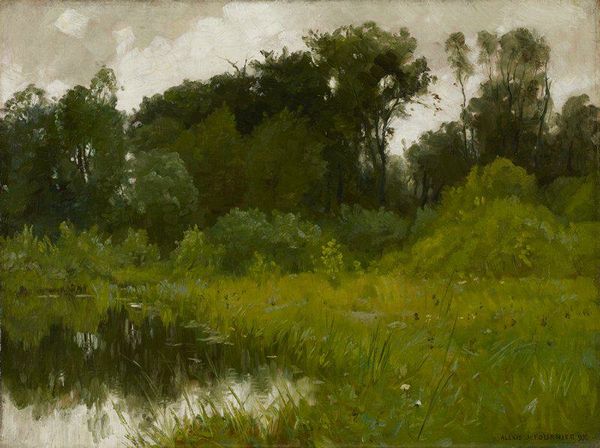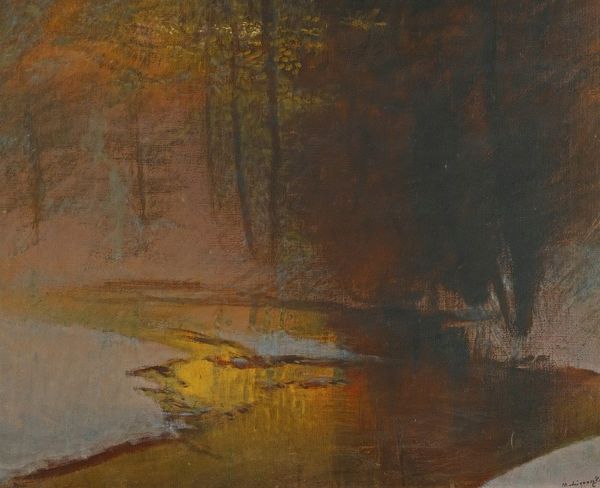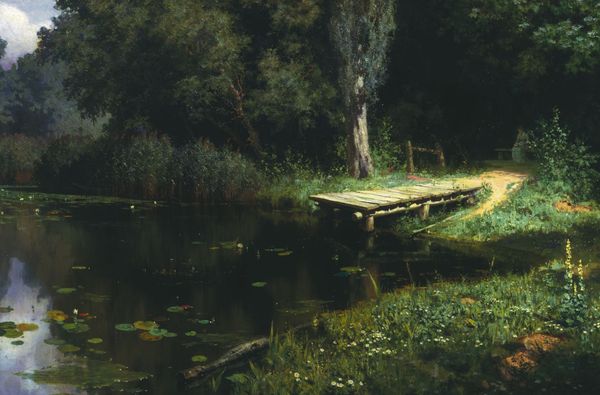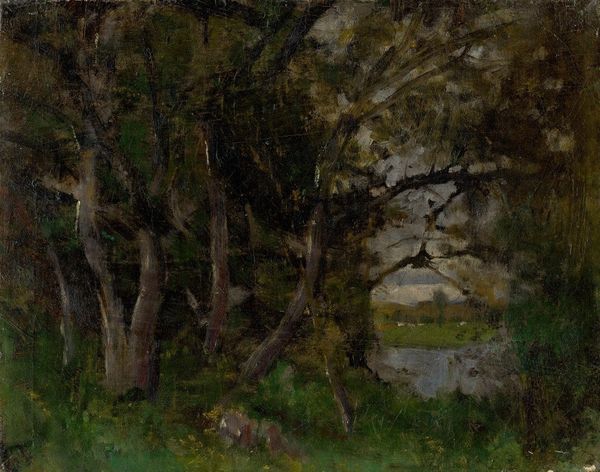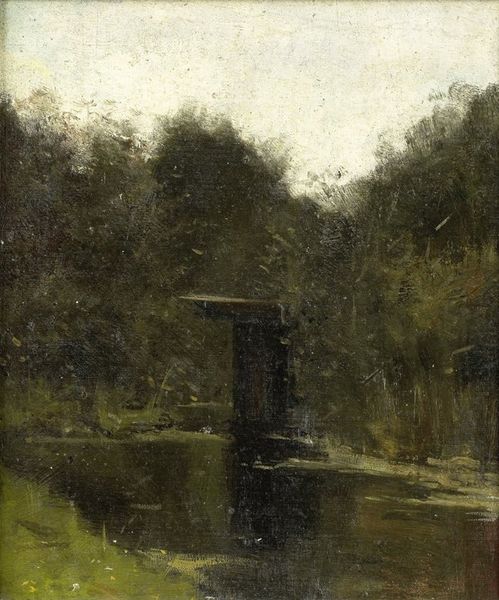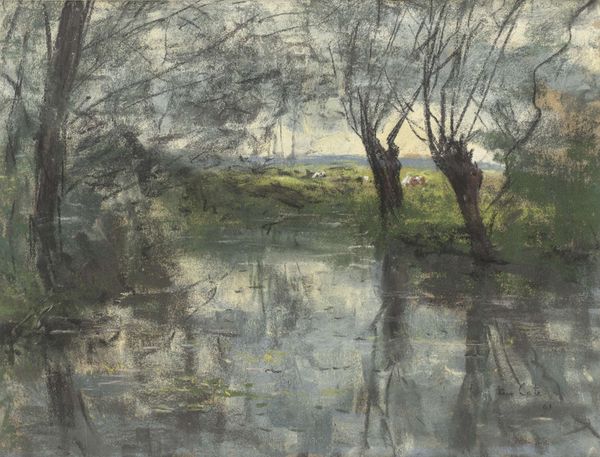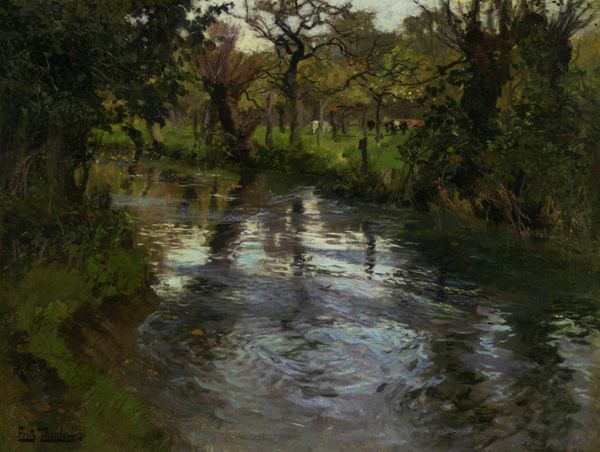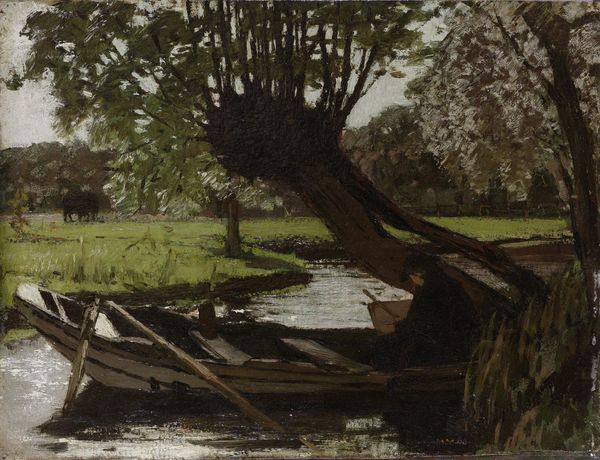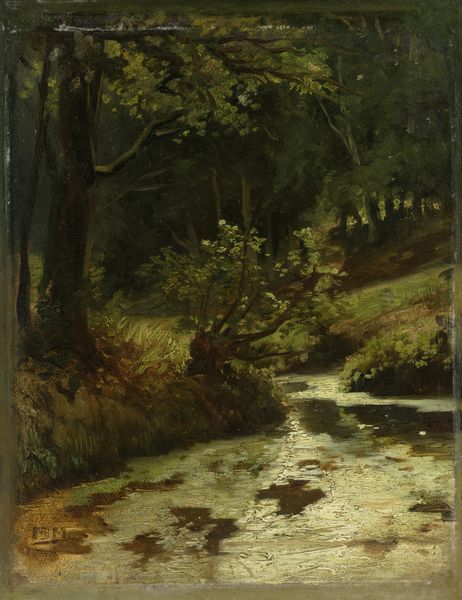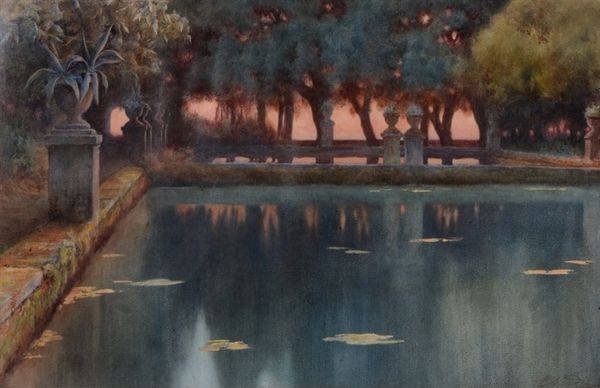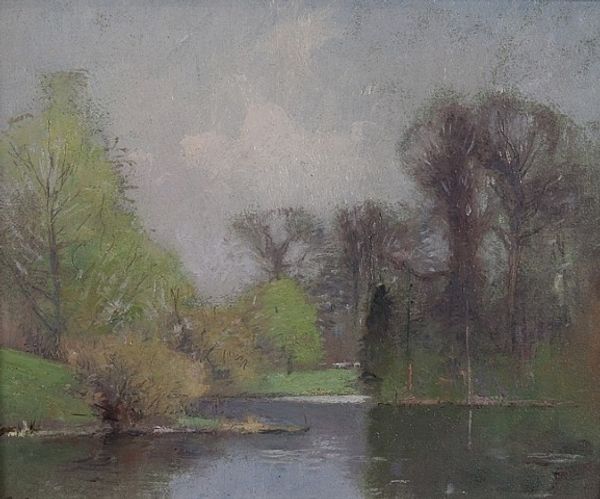
painting, plein-air, oil-paint
#
painting
#
impressionism
#
plein-air
#
oil-paint
#
landscape
#
river
Copyright: Public domain
Stefan Popescu made this painting, On the River Shore, using traditional materials: paint and canvas. Notice how the artist manipulated the oil paint to create varied textures. Thick, opaque strokes define the foliage, contrasting with the smoother, almost liquid quality of the water. The materiality of the paint, its viscosity and sheen, are critical to the overall effect. Popescu skillfully used brushes and perhaps palette knives to build up layers of color and texture, capturing the play of light on the water’s surface and the dense foliage along the shore. Oil paint has a long history, deeply entwined with the development of capitalism. Its versatility and durability made it a favorite among artists seeking to represent the world around them. But it also speaks to a history of extraction, production, and trade. Consider the labor involved in harvesting the raw materials, processing the pigments, and manufacturing the paint itself. By attending to these material aspects, we gain a richer understanding of the artwork and its place in a broader social and economic context. The distinction between fine art and craft blurs as we recognize the skilled labor and material transformations that underpin every artistic creation.
Comments
No comments
Be the first to comment and join the conversation on the ultimate creative platform.
